Indomethacin for symptomatic patent ductus arteriosus in preterm infants
- PMID: 33448032
- PMCID: PMC8095061
- DOI: 10.1002/14651858.CD013133.pub2
Indomethacin for symptomatic patent ductus arteriosus in preterm infants
Abstract
Background: Symptomatic patent ductus arteriosus (PDA) is associated with mortality and morbidity in preterm infants. In these infants, prophylactic use of indomethacin, a non-selective cyclooxygenase inhibitor, has demonstrated short-term clinical benefits. The effect of indomethacin in preterm infants with a symptomatic PDA remains unexplored.
Objectives: To determine the effectiveness and safety of indomethacin (given by any route) compared to placebo or no treatment in reducing mortality and morbidity in preterm infants with a symptomatic PDA.
Search methods: We used the standard search strategy of Cochrane Neonatal to search Cochrane Central Register of Controlled Trials (CENTRAL; 2020, Issue 7), in the Cochrane Library; Ovid MEDLINE(R) and Epub Ahead of Print, In-Process & Other Non-Indexed Citations, Daily and Versions(R); and Cumulative Index to Nursing and Allied Health Literature (CINAHL), on 31 July 2020. We also searched clinical trials databases and the reference lists of retrieved articles for randomized controlled trials (RCTs) and quasi-RCTs.
Selection criteria: We included RCTs and quasi-RCTs that compared indomethacin (any dose, any route) versus placebo or no treatment in preterm infants.
Data collection and analysis: We used the standard methods of Cochrane Neonatal, with separate evaluation of trial quality and data extraction by at least two review authors. We used the GRADE approach to assess the certainty of evidence for the following outcomes: failure of PDA closure within one week of administration of the first dose of indomethacin; bronchopulmonary dysplasia (BPD) at 28 days' postnatal age and at 36 weeks' postmenstrual age; proportion of infants requiring surgical ligation or transcatheter occlusion; all-cause neonatal mortality; necrotizing enterocolitis (NEC) (≥ Bell stage 2); and mucocutaneous or gastrointestinal bleeding.
Main results: We included 14 RCTs (880 preterm infants). Four out of the 14 included studies were judged to have high risk of bias in one or more domains. Indomethacin administration was associated with a large reduction in failure of PDA closure within one week of administration of the first dose (risk ratio (RR) 0.30, 95% confidence interval (CI) 0.23 to 0.38; risk difference (RD) -0.52, 95% CI -0.58 to -0.45; 10 studies, 654 infants; high-certainty evidence). There may be little to no difference in the incidence of BPD (BPD defined as supplemental oxygen need at 28 days' postnatal age: RR 1.45, 95% CI 0.60 to 3.51; 1 study, 55 infants; low-certainty evidence; BPD defined as supplemental oxygen need at 36 weeks' postmenstrual age: RR 0.80, 95% CI 0.41 to 1.55; 1 study, 92 infants; low-certainty evidence) and probably little to no difference in mortality (RR 0.78, 95% CI 0.46 to 1.33; 8 studies, 314 infants; moderate-certainty evidence) with use of indomethacin for symptomatic PDA. No differences were demonstrated in the need for surgical PDA ligation (RR 0.66, 95% CI 0.33 to 1.29; 7 studies, 275 infants; moderate-certainty evidence), in NEC (RR 1.27, 95% CI 0.36 to 4.55; 2 studies, 147 infants; low-certainty evidence), or in mucocutaneous or gastrointestinal bleeding (RR 0.33, 95% CI 0.01 to 7.58; 2 studies, 119 infants; low-certainty evidence) with use of indomethacin compared to placebo or no treatment. Certainty of evidence for BPD, surgical PDA ligation, NEC, and mucocutaneous or gastrointestinal bleeding was downgraded for very serious or serious imprecision.
Authors' conclusions: High-certainty evidence shows that indomethacin is effective in closing a symptomatic PDA compared to placebo or no treatment in preterm infants. Evidence is insufficient regarding effects of indomethacin on other clinically relevant outcomes and medication-related adverse effects.
Copyright © 2021 The Cochrane Collaboration. Published by John Wiley & Sons, Ltd.
Conflict of interest statement
PE is a Pediatric Resident at the Children's Hospital of Philadelphia. As a pediatric resident, he participated in the care of patients with PDA on his neonatology rotations.
DO has no interest to declare.
JNF is a Paediatric Cardiologist at the University of Vermont Medical Center.
RS is a Professor of Neonatology at the University of Vermont Medical Center. He needs to make the decisions detailed in the review on a daily basis.
SM is a neonatologist at a tertiary care neonatal intensive care unit in Halifax, Nova Scotia, Canada, where he attends to preterm infants diagnosed with a PDA. He has published review articles on PDA management in preterm infants.
Figures



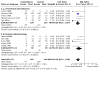



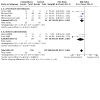
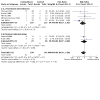
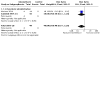







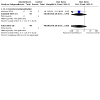

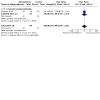






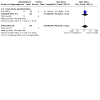


Update of
- doi: 10.1002/14651858.CD013133
References
References to studies included in this review
Cotton 1980 {published data only}
-
- Cotton RB, Hickey DE, Graham TP, Stahlman MT. Effect of early indomethacin (I) on ventilatory status of preterm infants with symptomatic patent ductus arteriosus (sPDA). Pediatric Research 1980;14:442.
Gersony 1983 {published data only}
-
- Peckham GJ, Miettinen OS, Ellison RC, Kraybill EN, Gersony WM, Zierler S, et al. Clinical course to 1 year of age in premature infants with patent ductus arteriosus: results of a multicenter randomized trial of indomethacin. Journal of Pediatrics 1984;105(2):285-91. [DOI: 10.1016/s0022-3476(84)80134-1] [PMID: ] - DOI - PubMed
Kluckow 2014 {published data only}
-
- Kluckow M, Evans N, Gill A, Jeffery M. Ductal echocardiographic targeting and early closure trial (DETECT): a pilot randomised controlled trial. In: Journal of Paediatrics and Child Health. Vol. 48. 2012:43-4.
-
- Varghese J, Gill A, McMichael J, Evans NJ, Rieger I, Bowen J, et al. Follow up at 2 years of an early ductal targeted treatment (DETECT) trial. Journal of Paediatrics and Child Health 2016;52(Suppl 2):102.
Knight 2011 {published data only}
-
- Knight D, Alkindi S, Buksh M, Kuschel C, Skinner J. Placebo-controlled pilot trial of indomethacin in preterm infants with a patent ductus arteriosus. Journal of Paediatrics and Child Health 2011;47:88.
Krauss 1989 {published data only}
Merritt 1981 {published data only}
Monset‐Couchard 1983 {published data only}
-
- Monset-Couchard M, Dias-Mançano D, Murat I, Relier JP. [Controlled trial of intravenous lyophilized indomethacin in the treatment of persistent ductus arteriosus in premature infants]. Pediatrie 1983;38(6):365-77. [PMID: ] - PubMed
Nestrud 1980 {published data only}
-
- Nestrud RM, Hill DE, Arrington RW, Beard AG, Dungan WT, Lau PY, et al. Indomethacin treatment in patent ductus arteriosus. A double-blind study utilizing indomethacin plasma levels. Developmental Pharmacology and Therapeutics 1980;1(2-3):125-36. [PMID: ] - PubMed
Neu 1981 {published data only}
-
- Neu J, Ariagno RL, Johnson JD, Pitlick PT, Cohen RS, Beets CL, et al. A double blind study of the effects of oral indomethacin in preterm infants with patent ductus arteriosus who failed medical management. Pediatric Pharmacology (New York) 1981;1(3):245-9. [PMID: ] - PubMed
Osborn 2003 {published data only}
Rudd 1983 {published data only}
Valaes 1980 {published data only}
-
- Valaes T, Moylan FM, Cohn H, Chung K, Nagpaul K, Chrenoff HL, et al. Incidence and significance of PDA in preterm infants (PTI) and controlled blind trial of indomethacin (IND). Pediatric Research 1980;14:452.
Yanagi 1981 {published data only}
-
- Yanagi RM, Wilson A, Newfeld EA, Aziz KU, Hunt CE. Indomethacin treatment for symptomatic patent ductus arteriosus: a double-blind control study. Pediatrics 1981;67(5):647-52. [PMID: ] - PubMed
Yeh 1981a {published data only}
-
- Betkerur MV, Yeh TF, Miller K, Glasser RJ, Pildes RS. Indomethacin and its effect on renal function and urinary kallikrein excretion in premature infants with patent ductus arteriosus. Pediatrics 1981;68(1):99-102. [PMID: ] - PubMed
-
- Yeh TF, Goldbarg HR, Henek T, Thalji A, Pildes RS. Intravenous indomethacin therapy in premature infants with patent ductus arteriosus. Causes of death and one year follow‐up. American Journal of Diseases of Children 1982;136(9):803‐7. [DOI: 10.1001/archpedi.1982.03970450045012] [PMID: ] - DOI - PubMed
-
- Yeh TF, Raval D, Lilien LD, Srinivasan G, Pildes RS. Decreased plasma glucose following indomethacin therapy in premature infants with patent ductus arteriosus. Pediatric Pharmacology (New York) 1982;2(3):171-7. [PMID: ] - PubMed
References to studies excluded from this review
Carmo 2009 {published data only}
Mardoum 1991 {published data only}
Mullett 1982 {published data only}
Nair 1986 {published data only}
Nuntnarumit 2011 {published data only}
Yeh 1982a {published data only}
References to studies awaiting assessment
Clyman 2019 {published and unpublished data}
-
- Clyman RI, Liebowitz M, Kaempf J, Erdeve O, Bulbul A, Håkansson S, et al, PDA-TOLERATE (PDA: TO LEave it alone or Respond And Treat Early) Trial Investigators. PDA-TOLERATE trial: an exploratory randomized controlled trial of treatment of moderate-to-large patent ductus arteriosus at 1 week of age. Journal of Pediatrics 2019;205:41-8.e6. [DOI: 10.1016/j.jpeds.2018.09.012] [PMID: ] - DOI - PMC - PubMed
References to ongoing studies
NCT03456336 {published data only}
-
- NCT03456336. Management of the PDA Trial (PDA) [Management of the patent ductus arteriosus in premature infants trial (PDA Trial)]. clinicaltrials.gov/ct2/show/NCT03456336 (first received 7 March 2018).
Additional references
Ballabh 2010
Bancalari 1979
Bayley 2006
-
- Bayley N. Bayley Scales of Infant and Toddler Development: Administration Manual. Third edition. San Antonio, TX: Harcourt, 2006.
Bell 1978
Bell 1980
Benitz 2010
Brown 1979
Cifuentes 1979
Clyman 1977
Clyman 1996
Clyman 2000
Coombs 1990
Cotton 1978
Cotton 1981
Davis 1990
-
- Davis JM, Hendricks-Munoz KD, Hagberg D, Manning JA. The effects of indomethacin on renal function and intracranial hemorrhage in infants with patent ductus arteriosus. Developmental Pharmacology and Therapeutics 1990;14(1):15-9. [PMID: ] - PubMed
Davis 1995
-
- Davis P, Turner-Gomes S, Cunningham K, Way C, Roberts R, Schmidt B. Precision and accuracy of clinical and radiological signs in premature infants at risk of patent ductus arteriosus. Archives of Pediatrics & Adolescent Medicine 1995;149(10):1136-41. [DOI: 10.1001/archpedi.1995.02170230090013] [PMID: ] - DOI - PubMed
Dice 2007
Dollberg 2005
Edwards 1990
Ellison 1983
-
- Ellison RC, Peckham GJ, Lang P, Talner NS, Lerer TJ, Lin L, et al. Evaluation of the preterm infant for patent ductus arteriosus. Pediatrics 1983;71(3):364-72. [PMID: ] - PubMed
Fowlie 2010
Friedman 1976
Fujii 2002
-
- Fujii AM, Brown E, Mirochnick M, O'Brien S, Kaufman G. Neonatal necrotizing enterocolitis with intestinal perforation in extremely premature infants receiving early indomethacin treatment for patent ductus arteriosus. Journal of Perinatology 2002;22(7):535-40. [DOI: 10.1038/sj.jp.7210795] [PMID: ] - DOI - PubMed
GRADEpro GDT [Computer program]
-
- GRADEpro GDT. Version accessed 9 November 2018. Hamilton (ON): McMaster University (developed by Evidence Prime). Available at gradepro.org.
Grosfeld 1996
-
- Grosfeld JL, Chaet M, Molinari F, Engle W, Engum SA, West KW, et al. Increased risk of necrotizing enterocolitis in premature infants with patent ductus arteriosus treated with indomethacin. Annals of Surgery 1996;224(3):350-5; discussion 355-7. [DOI: 10.1097/00000658-199609000-00011] [PMID: ] - DOI - PMC - PubMed
Hammerman 1986
Hammerman 1995
-
- Hammerman C. Patent ductus arteriosus. Clinical relevance of prostaglandins and prostaglandin inhibitors in PDA pathophysiology and treatment. Clinics in Perinatology 1995;22(2):457-79. [PMID: ] - PubMed
Herrera 2007
Heymann 1976
Higgins 2011
-
- Higgins JP, Altman DG, Sterne JA, on behalf of the Cochrane Statistical Methods Group and the Cochrane Bias Methods Group. Chapter 8: Assessing risk of bias in included studies. In: Higgins JP, Green S, editor(s). Cochrane Handbook for Systematic Reviews of Interventions Version 5.1.0 (updated March 2011). Cochrane, 2011. Available from handbook.cochrane.org.
Higgins 2019
-
- Higgins JP, Thomas J, Chandler J, Cumpston M, Li T, Page MJ, et al (editors). Cochrane Handbook for Systematic Reviews of Interventions Version 6.1 (updated September 2020). Cochrane, 2020. Available from www.training.cochrane.org/handbook.
ICROP 2005
Jacob 1980
Jones 2011
Kitterman 1972
Lago 2002
-
- Lago P, Bettiol T, Salvadori S, Pitassi I, Vianello A, Chiandetti L, et al. Safety and efficacy of ibuprofen versus indomethacin in preterm infants treated for patent ductus arteriosus: a randomised controlled trial. European Journal of Pediatrics 2002;161(4):202-7. [DOI: 10.1007/s00431-002-0915-y] [PMID: ] - DOI - PubMed
Malviya 2013
Matthew 1998
-
- Mathew R. Development of the pulmonary circulation: metabolic aspects. In: Polin RA, Fox WW, editors(s). Fetal and Neonatal Physiology. 2nd edition. Philadelphia (PA): WB Saunders, 1998:924-9.
Mitra 2018
-
- Mitra S, Florez ID, Tamayo ME, Mbuagbaw L, Vanniyasingam T, Angeliki Veroniki A, et al. Association of placebo, indomethacin, ibuprofen, and acetaminophen with closure of hemodynamically significant patent ductus arteriosus in preterm infants: a systematic review and meta-analysis. JAMA 2018;319(12):1221-38. [DOI: 10.1001/jama.2018.1896] [PMID: ] - DOI - PMC - PubMed
Mitra 2020
Moher 1998
Moher 2009
Nehgme 1992
-
- Nehgme RA, O'Connor TZ, Lister G, Bracken MB. Patent ductus arteriosus. In: Sinclair JC, Bracken MB, editors(s). Effective Care of the Newborn Infant. Oxford: Oxford University Press, 1992:281-324.
Noori 2009
Ohlsson 2020
Papile 1978
Review Manager 2020 [Computer program]
-
- Review Manager 5 (RevMan 5). Version 5.4. Copenhagen: The Cochrane Collaboration, 2020.
Schünemann 2013
-
- Schünemann H, Brożek J, Guyatt G, Oxman A, editor(s). Handbook for Grading the Quality of Evidence and the Strength of Recommendations Using the GRADE Approach (updated October 2013). GRADE Working Group, 2013. Available from gdt.guidelinedevelopment.org/app/handbook/handbook.html.
Semberova 2017
Shennan 1988
-
- Shennan AT, Dunn MS, Ohlsson A, Lennox K, Hoskins EM. Abnormal pulmonary outcomes in premature infants: prediction from oxygen requirement in the neonatal period. Pediatrics 1988;82(4):527-32. [PMID: ] - PubMed
Stavel 2017
-
- Stavel M, Wong J, Cieslak Z, Sherlock R, Claveau M, Shah PS. Effect of prophylactic indomethacin administration and early feeding on spontaneous intestinal perforation in extremely low-birth-weight infants. Journal of Perinatology 2017;37(2):188-93. [DOI: 10.1038/jp.2016.196] [PMID: ] - DOI - PubMed
Thibeault 1975
Webbe 2020
-
- Webbe JW, Duffy JM, Afonso E, Al-Muzaffar I, Brunton G, Greenough A, et al. Core outcomes in neonatology: development of a core outcome set for neonatal research. Archives of Disease in Childhood. Fetal & Neonatal Edition 2020;105(4):425-31. [DOI: 10.1136/archdischild-2019-317501] [PMID: ] - DOI - PMC - PubMed
Weir 1999
Weisz 2014
Yeh 1981b
Yeh 1982b
-
- Yeh TF, Goldbarg HR, Henek T, Thalji A, Pildes RS. Intravenous indomethacin therapy in premature infants with patent ductus arteriosus. Causes of death and one-year follow-up. American Journal of Diseases of Children 1982;136(9):803-7. [DOI: 10.1001/archpedi.1982.03970450045012] [PMID: ] - DOI - PubMed
Yeh 1982c
-
- Yeh TF, Raval D, Lilien LD, Srinivasan G, Pildes RS. Decreased plasma glucose following indomethacin therapy in premature infants with patent ductus arteriosus. Pediatric Pharmacology (New York) 1982;2(3):171-7. [PMID: ] - PubMed
References to other published versions of this review
Publication types
MeSH terms
Substances
LinkOut - more resources
Full Text Sources
Other Literature Sources
Miscellaneous

